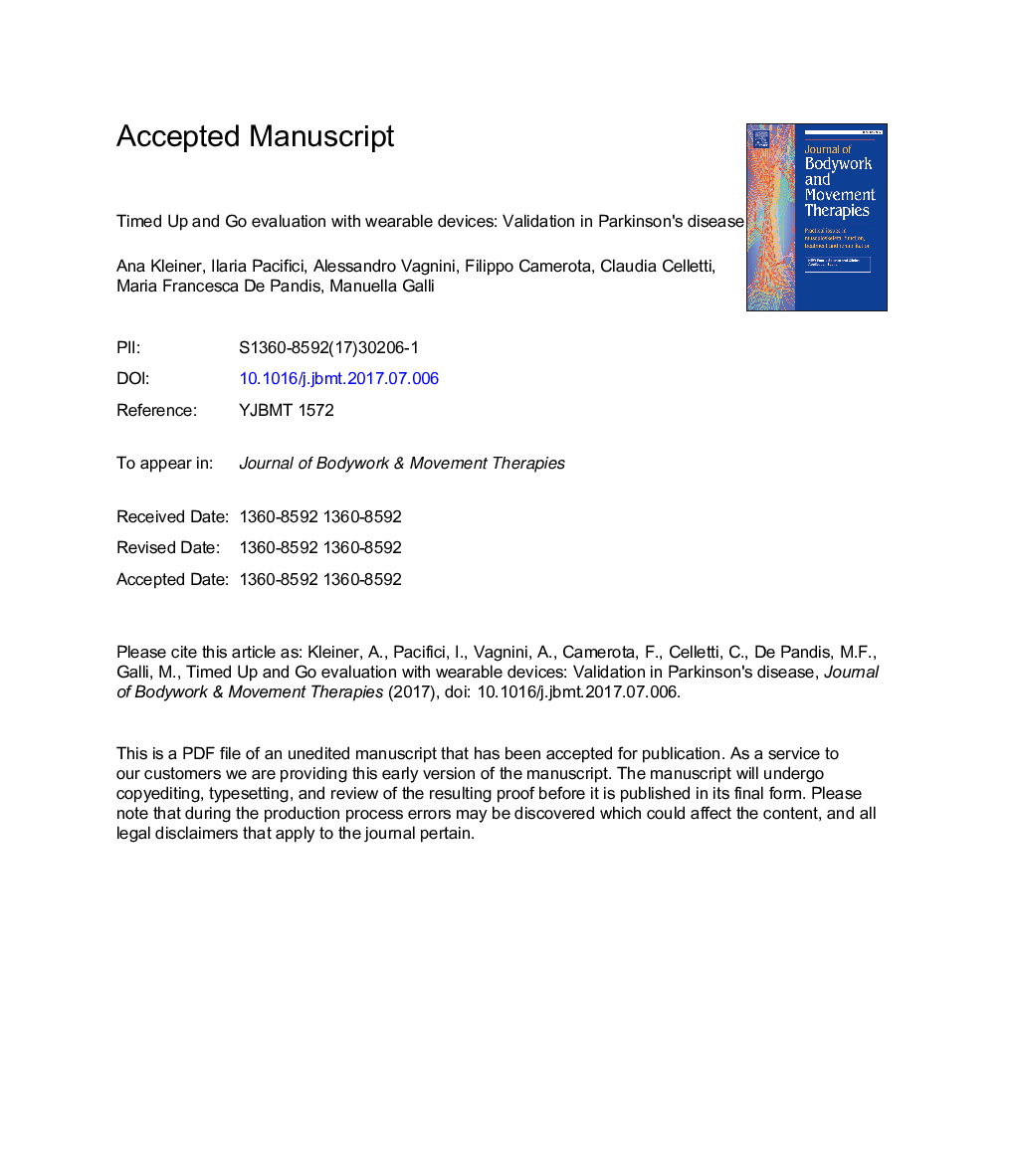| Article ID | Journal | Published Year | Pages | File Type |
|---|---|---|---|---|
| 8559199 | Journal of Bodywork and Movement Therapies | 2018 | 23 Pages |
Abstract
The Timed Up and Go test (TUG) is used to assess individual mobility. It evaluates static and dynamic balance by means of the total time required to complete the test, usually measured by a stopwatch. In recent years tools based on portable inertial measurement units (IMU) for clinical application are increasingly available on the market. More specifically, a tool (hardware and dedicated software) to quantify the TUG test based on IMU is now available. However, it has not yet been validated in subjects with Parkinson's disease (PD). Thus, the aim of this study is to compare measurements from instrumented TUG tests (or iTUG) acquired by an IMU with those obtained using an optoelectronic system (the gold standard) and by a stopwatch, to gain an in-depth understanding of IMU behavior in computing iTUG in subjects with PD. To do this, three TUG test trials were carried out on 30 subjects with PD and measured with all three systems simultaneously. System agreements were evaluated using Intraclass Correlation Coefficient and Bland-Altman plots. The device tested showed excellent reliability, accuracy and precision in quantifying total TUG test duration. Since TUG is a widely used test in rehabilitation settings, its automatic quantification through IMUs could potentially improve the quality of assessments in the quantification of PD gait ability.
Related Topics
Health Sciences
Medicine and Dentistry
Complementary and Alternative Medicine
Authors
Ana Francisca Rozin Kleiner, Ilaria Pacifici, Alessandro Vagnini, Filippo Camerota, Claudia Celletti, Fabrizio Stocchi, Maria Francesca De Pandis, Manuela Galli,
